This DIY-lookin’ DAC from Neko Audio has been in the market for a few years now, staying mostly under the radar. I’ve always thought that the Neko is a special DAC but I really haven’t been able to get a unit for a review. This time I bought one unit from Neko and at the same time I also asked Neko if they would ship a sample to Dave for a double-review.
After many hours of listening, Dave told me that he can’t get to see what the Neko is all about. We both share the same general impression, that the Neko is a dark sounding DAC or I should even say an extremely dark sounding DAC. That’s where the similarity ends though. Dave thought that the darkness really makes it hard for him to “see” any detail in the music. On my end, however, I’ve always thought that the special thing about the Neko is that it manages to be superbly dark and yet very clear and clean sounding. The background among the blackest out there, even besting the Fostex HP-A8 and though not as resolving as the Fostex (though the Fostex has the advantage of having a built-in amp that lets me get a super-short signal path), the Neko is certainly more spacious, possessing a good amount of depth as well as width. Not only that, the dark tonality presents music with such rich musicality and full bodied bottom end that it really is hard to resist. Dark tonal, dark background, good depth, full bottom end, it seems that the Neko is tailor-made for me. Anyway this is the first double review on Headfonia where we have two totally conflicting opinions on the same product. I thought it’d be interesting to share both sides of the take.
Dave’s text in blue.
Mike’s text in black.
DAVE’S TAKE ON THE NEKO
There is a misconception that people always think the more expensive item is better; that the very fact of something’s high cost tells your brain that it will be better. You are expecting to hear better sound, so, as a result, you do hear better sound. This may be true for some people, but not me. Now first, I am not claiming to be some type of super human, who is immune to any any-and-all forms of expectation bias, but I will tell you what I am. I am a married father of two with very modest income. For me to have a HD 650, Dacport LX and Bottlehead Crack took quite a bit of saving, and several lucky coincidences coming together. So, when I see an expensive piece of equipment like the DAC being reviewed here, Neko Audio’s $1500 DAC, the D100 mk2, my thought isn’t, “OMG, this is going to be the most awesome thing ever!” I am thinking,” this better make gold come flowing out of my headphones if they expect me to pay this much money for a freaking DAC!” I am well aware that the law of diminishing returns applies heavily when the price starts to really climb, but I find that to be unacceptable. If I am paying $1500 for a DAC, I expect to hear $1500 worth of sound. My current DAC is the Dacport LX. It retails for $250, and I am going to say that it gives out $250 worth of sound. Does the D100 sound six times better?
THE GOOD
Let’s start here. The first thing you notice about the D100 over the LX is the tonality. Boy is this a dark sounding DAC! The bass body isn’t full; it is practically obese. Fat, but with very good detail and punch. The bass leads into a nice, full midrange, and a present, but not very awake treble section. Make no mistake, the lower frequencies are the star of this DAC. It is dark like nothing I have heard before. Let it not be said, however, that this dark sound is also extremely smooth. At times, it almost sounds like audible silk. The second thing you notice is a larger sound stage. It is the added width that is most apparent, but it has a deeper sound to it as well. Being the huge fan of classical that I am, this is a most welcome upgrade. The separation and layering is also a bit better with the D100. When I was able to try the D100 with the Soloist SL and the LCD-3, the bump in micro detail was noticeable. (Just a note: although the micro detail is better on the Soloist, the Crack is the more transparent amp. While the tonality difference doesn’t sound THAT big on the Burson, it is practically screaming on the Bottlehead.) With classical, folk, mellow rock or pop, the D100 was frequently a very enjoyable DAC to be using.
THE BAD
If you enjoy your treble, this is not the DAC for you. The Dacport LX has a much more balanced sound. I miss that sparkle in the treble when using the D100. That sparkle, plus the thinner bass (not thin, but not D100 thick), makes the LX the better choice for faster paced music, as the D100 got bogged down in that fat bass when trying to keep up with something like Green Day, or System of a Down. It just doesn’t have that attack. Even with classical, while I love great bass body and impact, I don’t want it to the exclusion of the other frequencies. There are times where the bass body was just too much, and you find your music getting bogged down in it. It wasn’t boomy, just overpowering. I found myself often missing the balanced tonality of the LX. And maybe I am insane, but I feel like the actual impact ever so slightly better on the Dacport. Come to think of it, that might be because when the Dacport LX comes down for a low punch, it stands out more since the whole sound isn’t down there all the time.
There is also the issue of inputs. The D100 has no USB input. It is optical and coaxial only. Now, this is going to be a plus for some, but it is a minus for me. I don’t have much space and all of my music is storied on my hard drive. This makes the D100 impractical for me. Like I said, for some of you, this will be a good thing, as you have no need for a USB input, but for those like me, that would rule this DAC out.
THE UGLY
So the Neko D100 takes the lead with a solid edge in technicalities, while the Dacport LX scores with a more balanced sound and much wider genre bandwidth. So, there are things that the Dacport does better? UNACCEPTABLE! I am not paying $1500 for a DAC to have it bested in ANYWAY by something less than 20% its cost. I can’t in good conscious recommend that to someone. I know some may call me unrealistic in my expectations, but then they are talking to the wrong guy. To expect a workin’ stiff to save up $1500 for a marginal upgrade, if that, is what I call unrealistic. Maybe if I had a tricked out WA5 and a pair of HD800s at home, I might feel differently. Or course, I would be a completely different critic, in that case. The build quality also gives me pause. It is pretty snazzy looking as you can see, but it doesn’t feel particularly tough. Comparing it to the products made by Schiit, it may look a little better, but Schiit’s gear feels much sturdier in construction. If I am paying a premium for something, I want tank-like build quality. Again, this doesn’t deliver.
It should be obvious by now that I am a value for dollar kind of guy, and this is not a value product. Even if you would be willing to save up for a killer DAC, the Neko D100 doesn’t nearly fulfil the awesome quota required by its price tag. At first I thought that I was a really odd choice for this review being just a budding audiophile bound by budget (and a desire to not have his wife leave him). As I worked on this review, I realised it was that exact reason Mike choice me for this; because I will have a completely different perspective. And that perspective? If money is no concern, you want an exceedingly dark sounding DAC, and you don’t need a USB input, this one might be worth a look. If, however, you are a blue-collar audiophile like me, with one eye always on the pocketbook, I hope you enjoyed the review, but there is nothing for people like us here
MIKE’S TAKE ON THE NEKO
It’s funny how despite having similar music preferences (me and Dave both listen to Classical heavily, and enjoy the same Dacport LX + Crack + HD650 combo), and despite Dave’s description of the Neko being virtually identical to my impression of the Neko, but we differ so big on how he feel that the Neko isn’t worth the money while I thought this is one of the best DACs out there and one that I’ve been dying to have on my set up for so long. While I do agree on the part that the build quality can be improved, but really the Neko could come in an even uglier box and I wouldn’t care as the sound is too good to resist.
The first time I’ve heard the Neko D100 was before Wesley introduced the Mk2 version (which offer a higher voltage line out level — 2Volts — than the original). It was a special sounding DAC with an uber-dark tonality, even when I was still into a more neutral and less dark sound signature (i.e HD800). I’ve heard the DAC on various occasion and though it was mostly sitting unnoticed in headphone meets, I’ve always thought that the sound is extremely special and that it deserves more recognition and I vowed that one day I would do a review on it. Years passed and still I haven’t had the opportunity to do the review but even as new DACs come and go, I still have my heart on the Neko. I’ve heard how the Neko was able to save electrostatic set ups (including the SR-009) from being bland and borderline bright transformed into a musical set up with good bottom end, flow and depth just by switching the DAC section into the Neko. Paired with a good old HD650 + Bottlehead Crack system, this DAC seems to be the right piece to bring the famed Crack + 650 to the next level. Not only that, while simultaneously working on a review of the new ALO Studio Six, the Neko ends up being my preferred DAC with the Six + LCD-3 amidst the sea of other DACs. I did try the Studio Six + LCD-3 set up with the Ayon Skylla which is leaps and bounds ahead of the Neko in terms of technicalities and also midrange bloom, but it sounded too mellow for my taste where the Neko is more decisive and also possessing a weightier bottom end.
Though being based in a simple dual mono PCM1794A from Burr-Brown, the Neko is the best implementation of the 1794 I’ve heard. While the PCM1794 is a pretty common DAC chip, the implementation of the PCM1794A in the Neko is vastly different and superior to the average PCM1794 based DACs I’ve heard. Black background, excellent depth, grain-free, great lows, these are all characters I don’t normally hear on a PCM1794 based DAC. I don’t know how Neko is able to make the PCM1794A into the sound that I’m hearing but this is certainly closer to the level of a typical PCM1704 DAC rather than PCM1794.
I was so curious about the design of the Neko I went to the website trying to discover what the secret ingredient is. Wolfson WM8804 S/PDIF doesn’t sound to be the one. The two-stage AC filter sounds good but I bet other DAC manufacturers also have a filtering mechanism of their own. Star Ground wiring is also good, but hardly revolutionary. The zero feedback passive analog stage may be the secret recipe here (underline the word zero-feedback). I’ve seen galvanise isolation being implemented on high end DACs so that may also be a factor. Tantalum capacitors, good. The Jensen output transformer is something you don’t scoff at and something I don’t see being used on DACs very often. There is an RFI Filter on between the AC plug and the Toroidal transformer. The innards doesn’t look particularly fancy with the plain steel casing, but I do find a clean and articulate layout and build that oozes a sense of craftsmanship. Whatever it is, it seems that the combination of ingredients being used on the Neko works together to produce this highly musical sound that’s so successfully seducing in sound.
I went and asked Wesley Miaw, the man behind the Neko about the use of those rarely seen components on his DACs and perhaps explain a little bit behind the rationale behind them. Here is the conversation with Wesley straight from my mailbox. Orange text is Wesley’s.
1. The use of the output transformer. Can you explain more on this? I don’t think I’ve seen a DAC with a transformer out.
It’s pretty rare, because compared to transistors using transformers is significantly more expensive ($100-$200 versus $1), raises the output impedance (making cables and matching a little more important), and is a trade-off on how you affect the signal. To my knowledge, the D100 is the first mass produced solid-state DAC using output transformers.
The problem with transistor implementations, particularly with op-amps which require a feedback loop, is the distortion and introduced noise when you play back music. Simple measurements like sine wave THD+N and frequency response don’t accurate capture this problem. That’s why something may measure very well on those sorts of tests but still sound harsh to the ear or muddy sounds together.
Conversely, the problem with transformers is an increase in distortion as the frequency goes down, and the reflective nature of the circuit causing the load to be seen by the DAC chip itself. Generally speaking, the larger the transformer the less the distortion at lower frequencies and the D100 Mk2 uses one of Jensen’s larger transformers. They don’t need to be as large as in power amplifiers because the signal is much lower than what you’d get pushed out of a tube amp. Also, a current-based DAC chip like the PCM1794A in the D100 prefers a zero load which is possible with transistors (although of course physics makes that non-zero in reality) but not with transformers.
However, between the two, my personal opinion and the conclusion reached by many others is that the D100’s transformer-based output provides a much more accurate sound. Which is not necessarily something people are used to, for the same reason people growing up listening to MP3’s sometimes prefer compressed music over the original. There is less overall distortion and certainly much less objectionable distortion, the noise floor is silent, and there is less smearing of notes together. I’m particularly proud with the time we compared the D100 Mk2 to a highly-regarded high-end $7000 CD player from a major manufacturer, and a passage that sounded like the musician was continuously playing notes together on the CD player was revealed to have gaps between notes on the D100 Mk2.
2. The filter module on the AC inlet. That’s also uncommon?
Yes, for consumer audio gear. It’s also a significant expense with limited benefit for the vast majority of end users who have pretty clean power. Unless you have fluorescent lights on the same circuit or are using a switching power supply (e.g. wall warts) the internal step-down transformer found in most gear will reject a bunch of noise. Plus, including one means you can’t sell power conditioners or filters at a big markup. Built-in filters are more common in pro audio equipment since studios and engineering setups are less “clean” and the D100 happens to be used in a few.
The 2-stage line filter will reject a bunch of power line noise. The toroidal transformer provides step-down voltage and additional noise rejection with low levels of introduced noise, and the internal steel shield helps block any stray noise that remains.
3. The magnets on the line out cables?
Those are actually ferrite rings to filter out high frequencies (~10MHz). Noise that is probably coming from the WM8804, PCM1794A, and 12MHz clock. The DAC works fine without them, but removing extra high-frequency noise can be beneficial downstream and UL compliance requires them.
I think the only obstacle in appreciating the sound of the Neko is going past its dark tonality. I don think that a good transparent amp and headphone is required as otherwise it’s hard to see through the dark tonality. It really is one of the clearest sounding DAC I’ve heard, and combined with that dark tonality makes for an extremely special and rare combination in the world of DACs.
It’s easy to overlook the Neko simply by pure appearance as there are a lot of other DACs in the market in the $1K range that offer more features while at the same time looking more professional and better built. To name a few familiar models like the Lavry DA11, Benchmark DAC 1, Grace M902, Violectric V800, etc. Aside from the Lavry DA11 which is a truly resolving professional DAC, I can easily say that the Neko is better than the other DACs I mentioned. As for the Lavry, both in DA10 and DA11 models, though its accurate and resolving sound would be a much better monitoring DAC, I felt that the sound is to dry and lacking flow to be a music listening DAC. Anyway the point here is not to bash monitoring DACs, but rather to point out that at $1495, it does look like you’re not getting much bells and whistles when compared to the other offering. Still I firmly believe that the Neko justifies the lack of features (even the lack of an USB input) simply by besting all the other $1K DACs in sound quality. Though there are tons of other DACs to choose from in the $1K++ bracket, the Neko really stood out as being my favorite DAC among all the thousand dollar DACs I’ve listened to. If you happen to live in the US, there is a 30 days trial program for the Neko D100 Mk2. If you are interested in trying out the Neko, I suggest you give it a try.







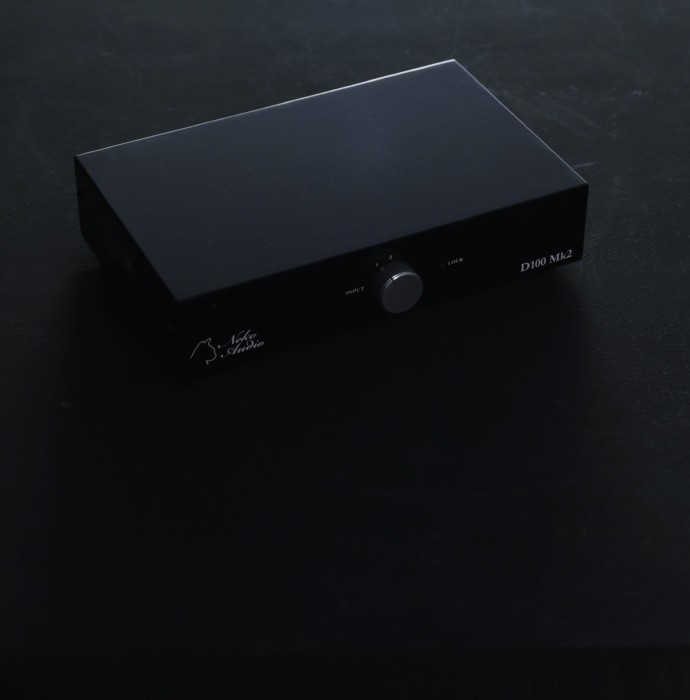

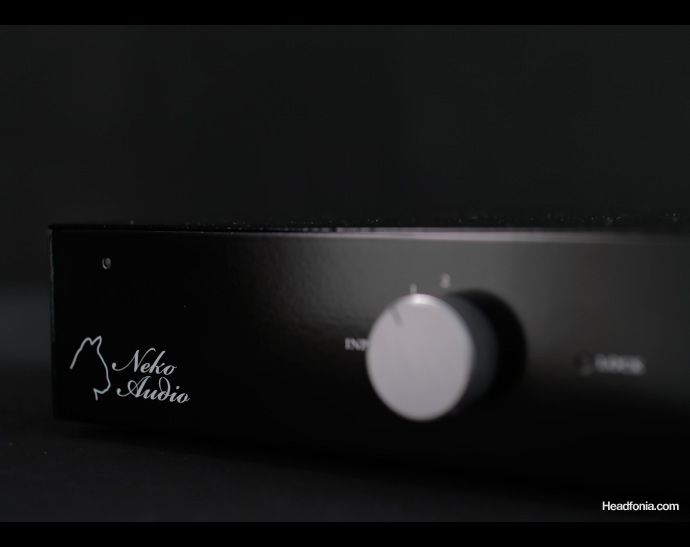
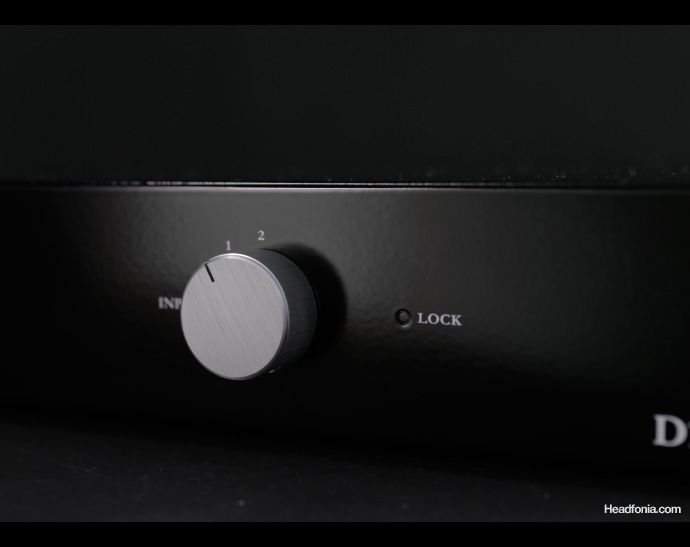
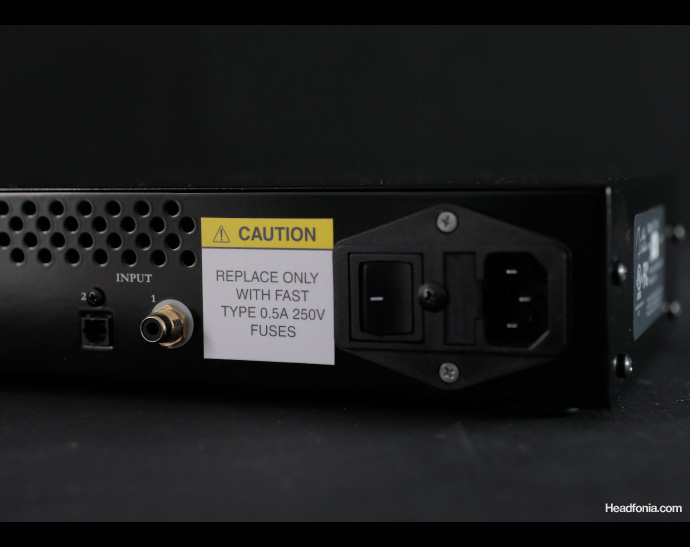
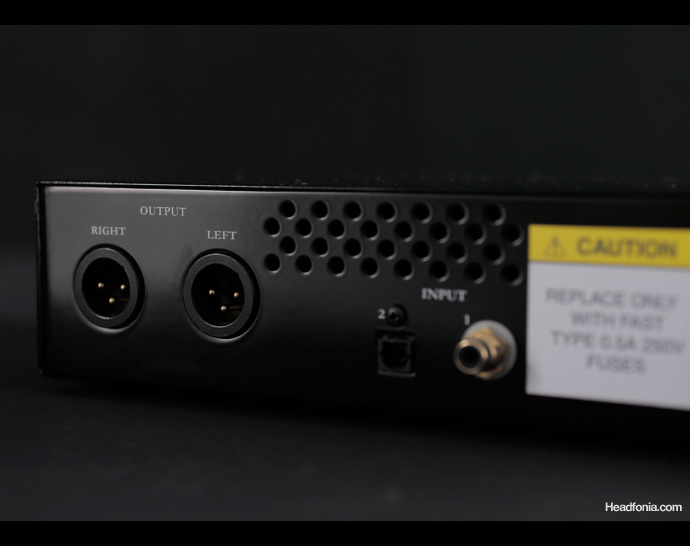
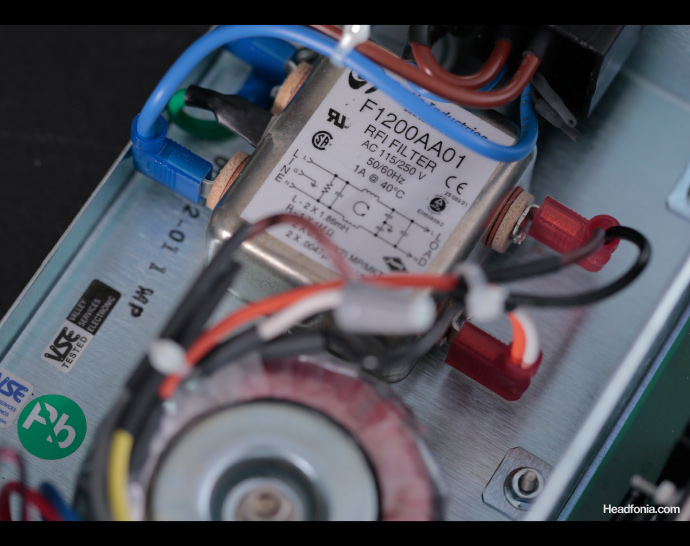
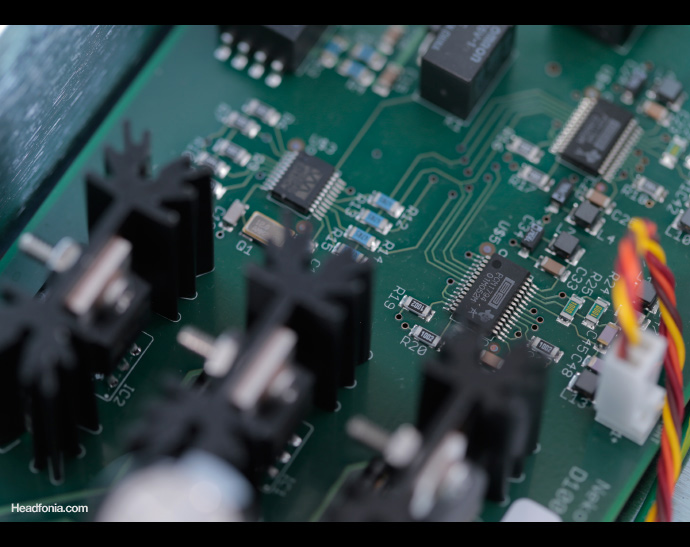
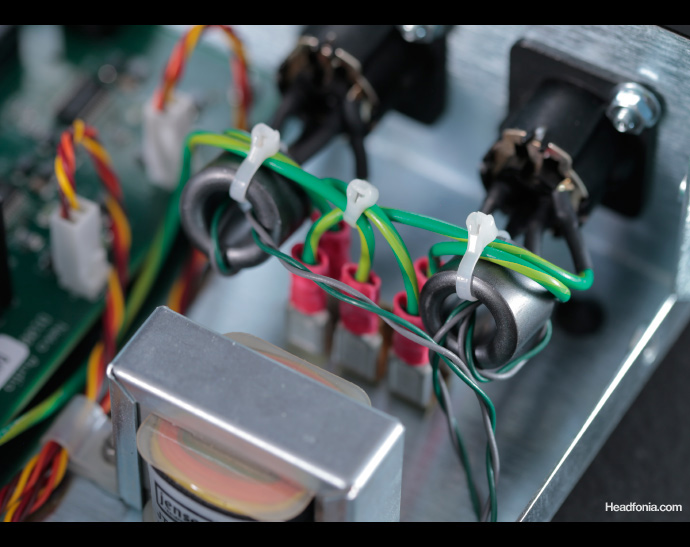
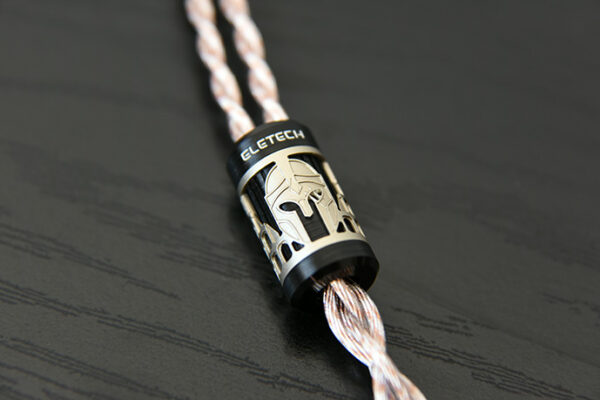
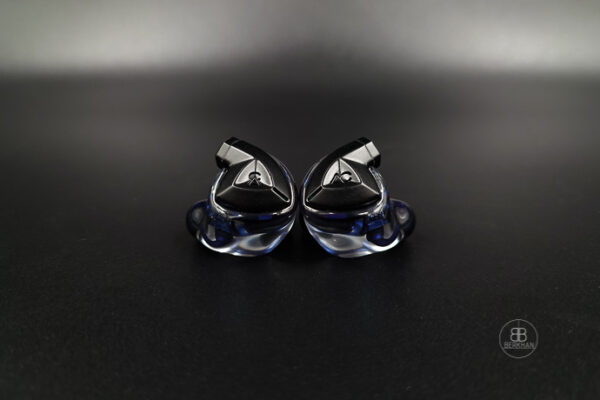
Dave Ulrich
Hmmm, this isn’t showing up on the main page.
L.
I call it magic. Other people might call it a caching problem. Give it some time, it’s “normal”
Dave Ulrich
Well, if there is one thing I know nothing about, it would be “normal.”
George Lai
Nor on mine too after two hours.
L.
It’s up now
George Lai
Yes it is. We are all so impatient in the Internet era. When a website takes more than 5 seconds to load, peopl will press the X button. Chill, enjoy our music and gears!
Mike
Okay I’m also guilty of that 5 seconds patience limit. So what happened is that I signed up for Google’s Page Speed Service so now Headfonia is being served by Google’s servers. Cuts loading time by some 50% in almost all areas of the globe. This however creates problems with article updates being delayed to you guys. However I think the delay issue is justified by the speed increase besides we’re not a news site.
If you’re on a fast connection the difference may be negligible but if you’re opening the site from a slow connection (i.e Indonesia), the difference is like PX100-II to HD800. 🙂
George Lai
Though the latest Neko article appears and disappears and reappears off the home page in the last 24 hours.
Mike
Uff..
L.
Here it’s on full time
L.
New site actually loads slower here then the old one, especially on mobile. how funny is that 😀
Dave Ulrich
Since the format is new, I just wanted to mention it in case there was an unforeseen difficulty that had not been noticed.
Mike
I’m trying to look into the issue.
John123John
” this better make gold come flowing out of my headphones if they expect me to pay this much money for a freaking DAC!”
Everyone read this, then read it again 🙂
The lack of USB input makes me think this was designed for Home Theater. Great review guys. I know the Dual Reviews require a bit more work but I think its great to have another perspective, especially on the same site at the same time!
Mike aka The Price of Darkness.
John123John
Dave, since you are in the states, it would be cool if you could get your hands on more Schiit products!
Mike
Yeah let’s do that!
L.
Not sure they still like us though after the A2 review 😀
Dave Ulrich
The only thing that would be left is the bifrost. Everything else is represented here. And yeah, as much as I wanted to, I haven’t really fallen in love with any of their gear.
John123John
Dude… I’ve been waiting for a bifrost review for years… or like a year. whatever.
John123John
This is how you know you have a legit review site!
Mike
Thanks for the title. 🙂
mkubota
LOVE the new dual-reviewer format!!!
Mike
Thank you!
L.
Thanks, but it’s not really new of course
mkubota
Now that you mention it, I do recall seeing other dual-reviews. I’m not sure why it stuck out in my head this time- perhaps because of the cleaner visual format of the new website. Or maybe it’s the greatly contrasting views. Both are good, I think.
donunus
Mike, if you love the dark sound in a dac you should try the mhdt havana NOS dac. It sounds very analog although a little lacking in PRaT for me. Changing the tube to an LM Ericsson made it have a killer organic tone though if that is what your system needs.
STARSTERN
….not as resolving as the Fostex (though the Fostex has the advantage of having a built-in amp that lets me get a super-short signal path….that gets translated into saying that by using the neko along with a good amp ,will get the resolving factor at the neko as well “??
Mike
The fostex is still more resolving but the neko is more musical. If you want to pair with the studio six the neko is the one I’d go for
STARSTERN
sorry ‘can you define these terms, little more ; musical vs resolving ?
STARSTERN
these both of them has ,I guess a dac/amp combined ,how would you put the difference in comparison overall ? Cypher Labs Theorem 720 vs Fostex HP-A8
Mike
HP a8 is much better
L.
It’s weird to compare a portable unit vs a desktop unit though
STARSTERN
Fostex HP-A8 is your best pick destop dac/amp combo ?
or which one is ?
by using a good dac/amp have no need for anything more in the set up system , to be of ‘high end , except of course the speakers or headphones “?
Mike
Yea the fostex is the best combo I know at the moment
STARSTERN
I guess ,without getting a definition of more resolving vs more musical ” will have to use my onw guess for it ” musical stands for better mids or deeper sound stage ‘and harmony ,
resolving stands for less distortion and covering wider freq response at one and the same time more efficiently ,” how far am I from right ?
Mike
Musical means just good for listening to music. Usually that includes good bass and mids.
Resolving just means it lets you hear more things present in the recording.
Bernard Zune
how do I set up a dac ,
am lost with all these names ,spdif cable ,fire wire to
usb,halide design bridge ,thunderbolt, which
takes me to best use out of the setting:) ?
Mike
Are you using a computer or a CD player?
Bernard Zune
oh my g-d, if a cd player ,will need additional gadget ,a transport :)?
yes ” am equipped with both ,in my living room ,the cd player the one with high end speakers ,the computer with installed sound enhancer DFX ,and will get more ..
Mike
Sorry totally lost me there
Bernard Zune
ok ‘ here we go ; finally got my friend looked into the system ;
my system is a cdp ,not a cd transformer which uses attached to it a dac ,
in order to use a external dac to my cd player = cdp which has its own integrated dac ,will I need some kind transformer to get the higher end external dac into use ‘ by bypassing its own build in dac ? 🙂
L.
You need to check if your CDP has a digital out, if yes you can connect an external dac (you will bypass your internal dac)
Bernard Zune
aux out ?
L.
Aux out has gone trough the DAC stage of the CDP
Bernard Zune
I looked into the systems ,just now, it appears to me ,that the video/aux R and L is for “in ” and the phone jack is for “out ”
understand ,that the “out ” is gone trough the dac stage ”
and the aux “in” whether it goes again trough the dac stage of its own ” ? 🙂
but only one amp which resides at the aux in system 🙂
Mike
Bernard,
Look out for a digital out on your CDP. If the CDP doesn’t have one, you’ll have to solder a wire somewhere on the PCB to tap into the digital out of the circuitry.
Bernard Zune
we
find after listening many system’s at j@r music
, years ago ‘ that speakers and headphones by Aiwa was best as far fuller mid
and low freq sound ,Sony was best as far deeper high ,by having them combined
in order ‘ that Sony being the outgoing’ the transport the dsp the dac ???
And Aiwa being the incoming ‘ the speaker the amp …??? We got the
best sound balance of crisp clear and full quality sound;
the
set-up we got here ; Aiwa mini system with its accompanied wonderful speakers
,but haven’t gotten best results playing cd’s out thru it ” we added a
specific modal of Sony boom box which we use as the transport or receiver
..Which plugged in out of Sony earphone jack into Aiwa’s aux jack, and it rocks!
have no idea which dac am using?” both ones “?
Now
‘ adding a dac will it go, I guess between the Sony and Aiwa ” and the dac
be able to replace the Sony for even better, although using anything portable
for the cd reader, receiver, dsp, am not good in names …
Can
you shed some light please =
L.
I’m sorry but I have no clue what you’re saying
Bernard Zune
let me try ,using different grammar, am not American but am here for a while ;
here I go ;
which componants am actually using when play A cd. trough a sony CDP
am using a sony stereo cdp out’ from its ‘ phone jack ,into aiwa cdp aux
line in ,
speakers get used is obvious the Aiwa
amp as well probably the Aiwa ”
transport = the CD reader is obvious Sony
after reading the CD trough its lasers ,needs to be interpreted that’s called = DSP ?
= digital signal processer ‘ is done by the Sony ?
then to convert it to analog=DAC gets used from both dacs Sony and Aiwa ???
and if will add external dac ,in between ,will it override any or all
integrated
dacs ?
Bernard Zune
you can take off that picture ,I tried but find no way to be done ,
just clicked on wrong image and also got to big ; sorry
Bernard Zune
can anyone give a hand here:) ?
Mike
What’s your set up?
Andy Q
Hey guys (Dave, Mike, L, everyone else), I currently own a Soloist SL and a MrSpeakers Mad Dog 3.2. It sounds like the Neko D100 Mk2 is good for me as it has great imaging, good details (combined with soloist?), and great bass presence (very important to me). Before reading this review I’ve already gone an ordered an Asus XEO Muses Edition to be my DAC. What are your comments on that particular combo? It hasn’t arrived and I haven’t got to try it yet. I might eventually also upgrade to Alpha Dogs and after hearing that it is slightly lacking in the low end (compared to Mad Dog), perhaps the Neko + Soloist will be the perfect match for it? Any thoughts and comments would be really appreciated.
Regarding Schiit, I have found that they make great value DACs but the amps are okay I guess. I had the Lyr and it was underwhelming in my setup at the time (LCD 2.2 and Modi). Replaced it with a Torpedo (based on Dave’s review) and Mad Dog 3.2 and was very happy until I picked up the Soloist SL and I am now even happier.
I would love to see a Bifrost Uber (USB Gen2) review. Some comparisons with the Modi would be great too since it is the next model down.
Dave Ulrich
First, I amp happy to tears that someone actually read my Torpedo review and acted on it. Second, I would agree that the SL is the better of the two (and it should be at twice the cost).
Second, just to make sure you are aware, the Neko has NO USB input. You mentioned using the Modi which is a USB ONLY dac, and I want to make sure you realize that. I would hate for you to snag a Neko only to find that it wouldn’t do.
Although I wasn’t a big fan of the Neko, its depth and imaging are superb. The big flaw of the Mad Dogs is its lack of depth. The SL has good depth and layering as well. Although I haven’t heard that combo, I can’t think the Mad Dogs would be ideal. I do like the MD however.
I am not due to have my Mad Dogs upgraded for a few weeks yet, but from my understanding, it isn’t lacking in the bass so much as lacking in emphasis in the bass. The bass is deeper, tighter and faster, but missing the extra body. It is suppose to be very linear. So, if your music calls for accurate bass (classical, jazz, rock) then it should be nice. If your music calls for fat bass, well, then you are backing up the wrong tree with Mr. Speakers, anyway. What is your music?
I haven’t heard the Asus, so I can’t comment.
Andy Q
Hi Dave,
The Torpedo was certainly an underrated gem and for a little while, I thought that I would be keeping that amp for a very long time. I am surprised that there are so little reviews for it but your review (and comparison with the Schiit amps) closed the deal for me. 🙂
I like your quest for getting maximum performance and value as that’s what I am all about too. I’m pretty much checking second hand online markets every day for a half priced Neko.
In response to the type of music I listen to: It’s predominantly pop, rock, classic rock, a bit of jazz and a tiny bit of classical. Pretty much a bit of everything.
It’s interesting that you described the Mad Dog bass as being accurate because I find that it’s the perfect amount for me. Perhaps I am not the basshead I thought I was after all. The problem with my future upgrade to Alpha Dog is that I heard that the Alpha Dog has less bass impact than the Mad Dog. I am worried that I will find bass lacking. I read a 6moons review that did nothing to alleviate that concern.
For a brief time, I had a T1 with a Crack (modi dac) and I found that the whole setup (while being absolutely brilliant technically) was a bit treble happy and I thought that for the price of a T1, I really needed to LOVE it. I found that I enjoyed the Mad Dog setup more than the T1 setup so I sold the T1. I am now thinking that if I had a Neko, maybe I might have been on to something with the T1.
With regards to the no-USB thing, I recently found a very cheap Concero HP which I intend to pair with my Philips Fidelio X1 (2nd setup) and if/when I find the Neko, I was going to use the Concero HP as a USB/SPDIF converter. I’d say that it would be very close to my end-game setup but there’s really no such thing as “end-game” for us is there? :p
Bogdan
It is not the newest review and it has been quiet here for a while, but Neko is still in production. As some new DACs appeared on the market I wonder if anyone can briefly compare Neko to Denafrips Ares or Pontus.